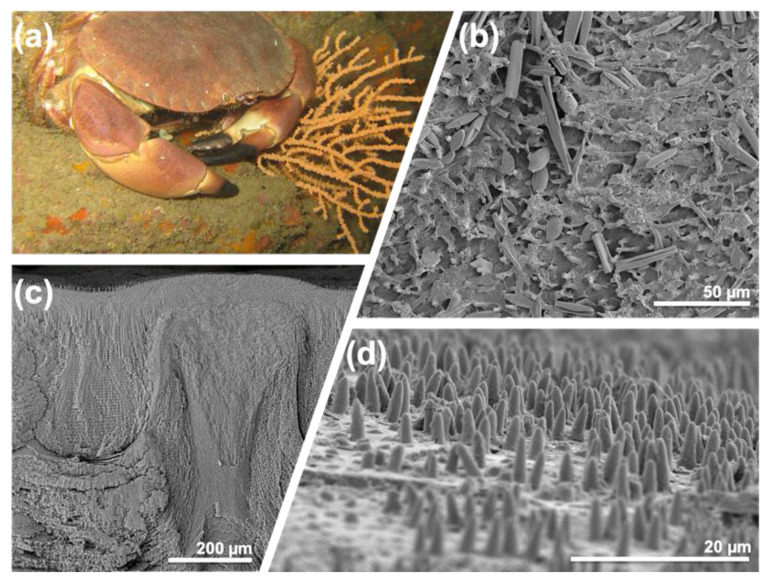Figure 4.
Crustaceans continue to be a source of inspiration in the search for new antifouling strategies and other technologies such as nanostructured composites. Here, electron microscopy images of the surface of the carapace of the marine decapod crustacean Cancer pagurus (a), also showing laminar structure in cross-section (c, scale bar = 200 µm) show the presence of micro-topographic features presented to any colonising organisms (epibionts). Many of the upper and under surfaces of C. pagurus are covered in these micro-scale spines (microtrichia), approximately some 5 to 20 microns in length (d, scale bar = 20 µm). These surfaces do sustain some colonisation (in this case, benthic diatoms species) (b, scale bar = 50 µm); however, the role and extent of any natural antifouling provided by these surface structures against larger epibionts (particularly other calcareous colonising species such as polychaetes) are not yet fully understood. Image (a) by Matthieu Sontag from Wikimedia Commons, licensed under CC BY-SA 4.0.

